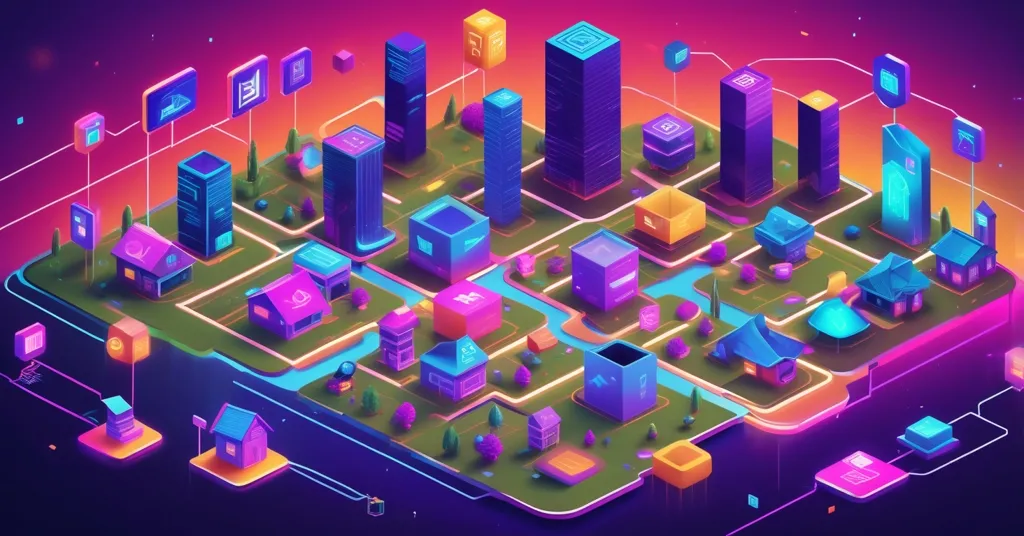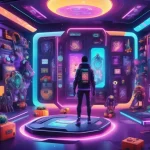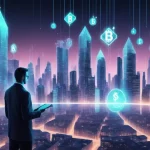NFTs Evolve Beyond Hype: Real-World Uses and Future Trends in 2025

A Complete Guide to NFTs: Evolution and Real-World Applications
Are NFTs just a passing fad, or are they here to stay? In 2021, NFTs exploded into the mainstream, fueled by celebrity endorsements and high-profile sales, including Beeple’s $69 million auction. By 2025, the initial frenzy has subsided, yet NFTs are far from extinct. Instead, they’re evolving into a more sustainable and integral part of our digital economy, with applications reaching far beyond speculative art.
- Unique digital assets on blockchain
- Peak popularity in 2021
- Real-world applications in 2025
- Hosted on Ethereum, Solana, Polygon
- Used for ownership, collectibles, real estate, gaming
Non-Fungible Tokens (NFTs) are digital assets that represent ownership on a blockchain. Unlike cryptocurrencies like Bitcoin or Ethereum, which are fungible and interchangeable — similar to how one dollar bill can be swapped for another — each NFT is unique. This uniqueness makes NFTs ideal for representing one-of-a-kind items like art, music, or virtual real estate. Think of an NFT as a digital certificate of authenticity, ensuring that what you own is truly yours.
In 2021, NFTs grabbed headlines with celebrity endorsements and mind-boggling sales. Beeple’s “Everydays: The First 5000 Days” sold for a staggering $69 million, catapulting NFTs into the limelight. Collections like Bored Ape Yacht Club (BAYC) and CryptoPunks became cultural icons, driven by the allure of owning a piece of digital history.
Fast forward to 2025, and the speculative bubble has burst. But calling NFTs “dead” would be premature. Far from it — they’re evolving. NFTs are now branching into real-world applications, from gaming to real estate and intellectual property. This shift towards practical and sustainable uses is cementing their place in the broader digital economy.
NFTs primarily live on the Ethereum blockchain, but they’re also finding homes on Solana and Polygon, thanks to their faster transaction speeds and lower fees. For instance, Polygon, backed by a $20-billion tech company, is now used by major corporations like Salesforce and Starbucks for their NFT platforms. This expansion showcases the adaptability and growing acceptance of NFTs.
Creating an NFT involves a process called minting. This is when you attach a digital certificate to a piece of art or any digital content and register it on a blockchain. To mint an NFT, you’ll need a crypto wallet and a connection to an NFT marketplace like OpenSea, Rarible, or Coinbase NFT. Traditional auction houses like Sotheby’s and Christie’s have also embraced NFTs, adding legitimacy and credibility to the space.
Marketing an NFT successfully isn’t just about the art; it’s about building a community. A strong social media presence, engaging Discord communities, and partnerships with influencers can make or break an NFT project. Projects like CloneX, Azuki, and Pudgy Penguins are leading the charge, focusing on community-driven experiences and real-world utility over pure speculation.
One of the most exciting developments is the use of NFTs in real estate. Companies like Propy and Metropoly are using NFTs to streamline transactions and offer fractional ownership. Fractional ownership means multiple people can own parts of a property, making investment more accessible and transparent. This is just one example of how NFTs are transcending the digital realm to impact real-world industries.
And let’s not forget gaming. In virtual worlds like Decentraland, NFTs are used as in-game items, giving players true ownership over their digital assets. This not only enhances the gaming experience but also opens up new economic opportunities within the metaverse. Imagine owning a rare sword that you can sell or trade with other players, all secured by the blockchain.
But what about the future of NFTs? Experts believe that rarity and tangible utility will be key. Projects like Moonbirds and Cocky NFTs are setting the standard, focusing on long-term value rather than short-term speculation. And with the introduction of Soulbound Tokens (SBTs), proposed by Ethereum co-founder Vitalik Buterin, we’re looking at non-transferable NFTs that could revolutionize how we think about digital identity and ownership. SBTs are like digital tattoos, marking your achievements and affiliations in the blockchain world.
While NFTs have evolved significantly, they are not without their challenges. Critics point out the environmental impact due to the high energy consumption by blockchains, particularly Ethereum. Additionally, the unregulated nature of the NFT space has led to scams and fraud, reminding us that not all that glitters in the digital realm is gold. As we embrace NFTs, we must also remain vigilant and critical of their darker sides.
So, are NFTs dead? Not by a long shot. They’re just evolving, maturing into a more sustainable and integral part of our digital lives. As we move forward, NFTs will continue to challenge the status quo, driving innovation and pushing the boundaries of what’s possible in the digital economy.
Key Takeaways and Questions
- What are NFTs and how do they work?
NFTs are unique digital assets on a blockchain that represent ownership of digital content. They work by minting, which involves attaching a digital certificate to the asset and recording it on a blockchain, typically Ethereum.
- Why did NFTs become popular in 2021?
NFTs gained popularity due to celebrity endorsements and high-profile sales, like Beeple’s auction, which propelled them into mainstream consciousness.
- Are NFTs still relevant in 2025?
Yes, NFTs are still relevant, though the hype has diminished. They are evolving to include more practical applications in gaming, real estate, and intellectual property.
- How can someone create an NFT?
Creating an NFT involves generating digital content, using a crypto wallet to connect to an NFT marketplace, and minting the NFT by paying gas fees.
- What are the key platforms in the NFT space?
Major platforms include NFT marketplaces like OpenSea, Rarible, and Coinbase NFT, as well as traditional auction houses like Sotheby’s and Christie’s.
- What are the future trends for NFTs?
Future trends involve moving beyond speculative art to community-driven experiences and real-world applications, with projects like CloneX, Azuki, and Pudgy Penguins leading the way.
- What are the criticisms and challenges facing NFTs?
NFTs face criticism for their environmental impact due to high energy consumption by blockchains, and there is a risk of scams and fraud in the unregulated space.
- How can NFTs impact real-world industries?
NFTs can revolutionize industries like real estate by enabling fractional ownership, and gaming by providing true ownership of in-game assets, enhancing both accessibility and economic opportunities.
“NFTs are pieces of data attached to a digital asset that act as proof of ownership of that asset.”
“The fact that there’s only one copy of each ape in existence is what makes them valuable.”
“But referring to NFTs as ‘dead’ would be premature.”
“NFTs are increasingly regarded as essential elements of a larger, more sustainable digital economy.”



